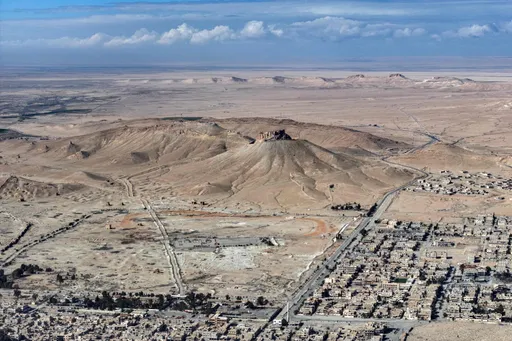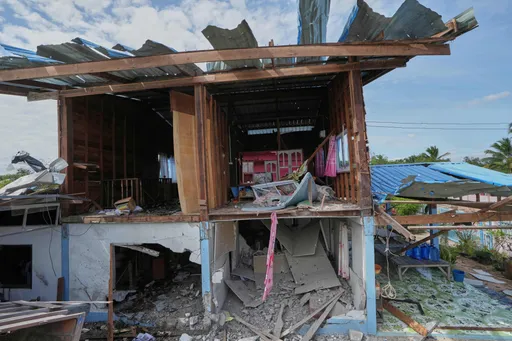The United Arab Emirates (UAE) received an unprecedented amount of rainfall, partially submerging much of the country on March 16 and leaving three Filipino migrant workers dead.
According to the Philippines Department of Migrant Workers, two women died after their vehicle drowned in the floodwater, while a man died after his vehicle fell into a sinkhole.
The UAE owes much of its growth and development to a heavy influx of migrant workforce, which is equivalent to almost 90 percent of its population, according to the UN 2022 World Migration Report.
Most of the labourers, who come from developing countries like India and Pakistan, live in less opulent areas.
“At most, the accommodation of South Asian migrant workers, doing all cleanup and clearing of debris, in cramped labour camps endured the adverse impacts of severe flooding,” says Yasser Elsheshtawy, who is a professor at Columbia University Graduate School of Architecture, Planning, and Preservation.
Floods halting life in Dubai
"I have never seen such torrential rain in Dubai. We could not work and go out anywhere because roads transformed into a river in certain areas.” Abdullah Ozturk, a Turkish businessman in Dubai’s tourism sector, tells TRT World.
Ozturk recalls how quickly the weather changed, casting a gothic look on the skyline. Within a few minutes, he looked out of his apartment building and saw the water level rising to dangerous margins, paralysing the Middle East's financial centre and its vibrant night life.
In the next 24 hours, Dubai received 142 millimetres (5.59 inches) of rainfall, which is 184 percent higher than the city's annual average.
Instant Urban Expansion
According to the Dubai Statistic Centre, Dubai has become a leading financial hub integrated into the global economic system primarily through trade, tourism, and real estate sectors. Experts claim that its core growth revolves around the monetisation and commodification of urban space.
That’s why the heavy rainfall inundating the city and submerging a significant portion of its outdoor infrastructure poses a major financial risk.
“Dubai was not planned to deal with any kind of climate change — it is a car-centric city where you have an endless expansion into the desert to accommodate a housing policy ensuring the provision of housing for local residents in the form of free-standing villas,” Prof. Yasser Elsheshtawy describes the city to TRT World.
For him, Dubai is an example of a modern progressive metropolis. However, the recent deluge shines a light on the downside of rapid urban development.
A year’s worth of rain had far-reaching consequences on some of the city's most iconic locations.
From uber-luxurious Sheikh Zayed Road to flagship shopping centres, Dubai Mall and Mall of the Emirates, the flooding impacted almost all of the city's architectural marvels.
Ankle-deep water at a Dubai Metro station, typically a lifeline for commuters, caused major disruptions. Even the world's busiest Dubai Airport (by international passenger traffic) was severely affected.
Urbanisation-related causes
"These kinds of extreme events are what we expect to happen as the climate warms, the atmosphere holds more water, and weather patterns become more erratic. But few places are prepared for them as the Dubai flood illustrates all too clearly," warns Simon Dalby, CIGI Chair in the Political Economy of Climate Change and a professor emeritus at Wilfrid Laurier University.
Speaking to TRT World, he stresses that luxury accommodation is also vulnerable to extreme events, as the recent flooding serves as a stark reminder that even wealthy cities are not immune to the impacts of a disrupted climate system.
Experts say urban planners must ensure new urban infrastructure is designed according to the fast-changing weather patterns.
To ensure cities can withstand extreme weather conditions such as floods and cyclones, Prof. Elsheshtawy says that “road infrastructure, sidewalks, and parks should be made of porous materials so that excess water can be absorbed [by the soil underneath].”
Cities closer to water bodies should have flood canals to quickly divert excess water to the sea, river or lake.
Swift recovery
“People around the world choose Dubai for its megaprojects on transnational urbanism which creates a pleasant high-tech urban environment where you can safely and freely dwell," says Ozturk.
Although the images of underwater Dubai may have battered its global image, Ozturks says local municipal authorities managed to restore order within 24 hours as "practically everything" was back to normalcy.
“Despite the city's infrastructure struggling to cope with the extreme weather, tarnishing its successful urban image, I believe it will be better prepared for future disasters after witnessing the swift action taken by the authorities," he asserts.
























